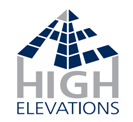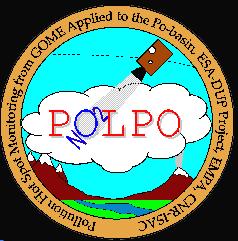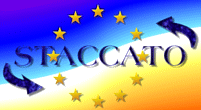Research Projects
 GAW (Global Atmosphere Watch) The Global Atmosphere Watch (GAW) programme of WMO is a partnership involving 80 countries, which provides reliable scientific data and information on the chemical composition of the atmosphere, its natural and anthropogenic change, and helps to improve the understanding of interactions between the atmosphere, the oceans and the biosphere.
GAW (Global Atmosphere Watch) The Global Atmosphere Watch (GAW) programme of WMO is a partnership involving 80 countries, which provides reliable scientific data and information on the chemical composition of the atmosphere, its natural and anthropogenic change, and helps to improve the understanding of interactions between the atmosphere, the oceans and the biosphere.
![]() ACTRIS-2 in H2020 addresses the scope of integrating state-of-the-art European ground-based stations for long-term observations of aerosols, clouds and short lived gases. It consolidates and improves services offered within FP7 funded Integrated Infrastructures Initiative ACTRIS (2011-2015). ACTRIS-2 takes up the overarching objectives of ACTRIS to further integrate the European ground-based stations and to construct a user-oriented RI, unique in the EU-RI landscape, for aerosols, clouds, and short-lived gas-phase species.
ACTRIS-2 in H2020 addresses the scope of integrating state-of-the-art European ground-based stations for long-term observations of aerosols, clouds and short lived gases. It consolidates and improves services offered within FP7 funded Integrated Infrastructures Initiative ACTRIS (2011-2015). ACTRIS-2 takes up the overarching objectives of ACTRIS to further integrate the European ground-based stations and to construct a user-oriented RI, unique in the EU-RI landscape, for aerosols, clouds, and short-lived gas-phase species.
![]() ACTRIS (Aerosols, Clouds, and Trace gases Research InfraStructure Network) is a European Project aiming at integrating European ground-based stations equipped with advanced atmospheric probing instrumentation for aerosols, clouds, and short-lived gas-phase species. ACTRIS will have the essential role to support building of new knowledge as well as policy issues on climate change, air quality, and long-range transport of pollutants. ACTRIS is building the next generation of the ground-based component of the EU observing system by integrating three existing research infrastructures EUSAAR, EARLINET, CLOUDNET, and a new trace gas network component into a single coordinated framework. ACTRIS is funded within the EC 7th Framework Programme under "Research Infrastructures for Atmospheric Research" and started on 1 April 2011 for a period of 4 years.
ACTRIS (Aerosols, Clouds, and Trace gases Research InfraStructure Network) is a European Project aiming at integrating European ground-based stations equipped with advanced atmospheric probing instrumentation for aerosols, clouds, and short-lived gas-phase species. ACTRIS will have the essential role to support building of new knowledge as well as policy issues on climate change, air quality, and long-range transport of pollutants. ACTRIS is building the next generation of the ground-based component of the EU observing system by integrating three existing research infrastructures EUSAAR, EARLINET, CLOUDNET, and a new trace gas network component into a single coordinated framework. ACTRIS is funded within the EC 7th Framework Programme under "Research Infrastructures for Atmospheric Research" and started on 1 April 2011 for a period of 4 years.
ICOS-RI (Integrated Carbon Observation Cycle) is a pan-European Research Infrastructure which provides harmonized and high precision scientific data on carbon cycle and greenhouse gas budget and perturbations. ICOS data is openly available at the Carbon Portal. The Carbon Portal is a one-stop shop for all ICOS data products. The Italian measurement network is coordinated by ICOS - Italy
 NextData The Project of Interest NextData will favour the implementation of measurement networks in remote mountain and marine areas and will develop efficient web portals to access meteoclimatic and atmospheric composition data, past climate information from ice and sediment cores, biodiversity and ecosystem data, measurements of the hydrological cycle, marine reanalyses and climate projections at global and regional scale.
NextData The Project of Interest NextData will favour the implementation of measurement networks in remote mountain and marine areas and will develop efficient web portals to access meteoclimatic and atmospheric composition data, past climate information from ice and sediment cores, biodiversity and ecosystem data, measurements of the hydrological cycle, marine reanalyses and climate projections at global and regional scale.
![]() MACC-2 (Monitoring Atmospheric Composition and Climate - Interim Implementation) is the current pre-operational atmospheric service of the European GMES programme. MACC provides data records on atmospheric composition for recent years, data for monitoring present conditions and forecasts of the distribution of key constituents for a few days ahead. MACC-II combines state-of-the-art atmospheric modelling with Earth observation data to provide information services covering European Air Quality, Global Atmospheric Composition, Climate, and UV and Solar Energy.
MACC-2 (Monitoring Atmospheric Composition and Climate - Interim Implementation) is the current pre-operational atmospheric service of the European GMES programme. MACC provides data records on atmospheric composition for recent years, data for monitoring present conditions and forecasts of the distribution of key constituents for a few days ahead. MACC-II combines state-of-the-art atmospheric modelling with Earth observation data to provide information services covering European Air Quality, Global Atmospheric Composition, Climate, and UV and Solar Energy.
 AGAGE-Advanced Global Atmospheric Gases Experiment AGAGE and its predecessors (the Atmospheric Life Experiment, ALE, and the Global Atmospheric Gases Experiment, GAGE) have been measuring the composition of the global atmosphere continuously since 1978. The AGAGE is distinguished by its capability to measure over the globe at high frequency almost all of the important gases species in the Montreal Protocol (e.g. CFCs and HCFCs) to protect the ozone layer and almost all of the significant non-CO2 gases in the Kyoto Protocol (e.g. HFCs, methane, and nitrous oxide) to mitigate climate change.
AGAGE-Advanced Global Atmospheric Gases Experiment AGAGE and its predecessors (the Atmospheric Life Experiment, ALE, and the Global Atmospheric Gases Experiment, GAGE) have been measuring the composition of the global atmosphere continuously since 1978. The AGAGE is distinguished by its capability to measure over the globe at high frequency almost all of the important gases species in the Montreal Protocol (e.g. CFCs and HCFCs) to protect the ozone layer and almost all of the significant non-CO2 gases in the Kyoto Protocol (e.g. HFCs, methane, and nitrous oxide) to mitigate climate change.
WMO SDS-WAS (WMO Sand and Dust Storm Warning Advisory and Assessment System) SDS-WAS is a WMO system established in 2007 to improve capabilities for more reliable sand and dust storm forecasts. Research forecasting products from atmospheric dust models may substantially contribute to risk reduction in many areas of societal benefit. It will rely on real-time delivery of products.
![]() SHARE (Station at High Altitude for Research on the Environment) Share is an integrated project funded by EV-K2-CNR Committe comprising an international climate and atmospheric monitoring network, researches in environmental and geophysical sciences and new technology development for monitoring activity in high mountain regions. Working in synergy with projects run by UNEP and WMO, data from the SHARE initiative benefit the international scientific community as well as decision makers.
SHARE (Station at High Altitude for Research on the Environment) Share is an integrated project funded by EV-K2-CNR Committe comprising an international climate and atmospheric monitoring network, researches in environmental and geophysical sciences and new technology development for monitoring activity in high mountain regions. Working in synergy with projects run by UNEP and WMO, data from the SHARE initiative benefit the international scientific community as well as decision makers.
![]() EUSAAR (European Supersites for Atmospheric Aerosol Research) The objective of EUSAAR UE-funded project is the integration of measurements of atmospheric aerosol properties performed in a distributed network of 20 high quality European ground-based stations. This integration contributes to a sustainable reliable operational service in support of policy issues on air quality, long-range transport of pollutants and climate change.
EUSAAR (European Supersites for Atmospheric Aerosol Research) The objective of EUSAAR UE-funded project is the integration of measurements of atmospheric aerosol properties performed in a distributed network of 20 high quality European ground-based stations. This integration contributes to a sustainable reliable operational service in support of policy issues on air quality, long-range transport of pollutants and climate change.
 EUROHYDROS The aim of EUROHYDROS has been the initialisation of a European Network for observations of molecular Hydrogen based on 12 continuous measurements sites which allow a wide range of observation, from clean air stations for measurements of atmospheric background to moderately polluted and urban. This in order to improve the understanding of hydrogen in the global background atmosphere and of the impact of European emissions on the present day atmosphere.
EUROHYDROS The aim of EUROHYDROS has been the initialisation of a European Network for observations of molecular Hydrogen based on 12 continuous measurements sites which allow a wide range of observation, from clean air stations for measurements of atmospheric background to moderately polluted and urban. This in order to improve the understanding of hydrogen in the global background atmosphere and of the impact of European emissions on the present day atmosphere.
![]() CIRCE (Climate Change and Impact Reserach: the Mediterranenan Environment) The general project objectives are to predict and to quantify physical impacts of climate changes in the Mediterranean area; to evaluate the consequences of climate changes for the society and the economy of the populations located in the Mediterranean area; to develop an integrated approach to understand combined effects of climate change; to identify adaptation and mitigation strategies in collaboration with regional stakeholders.
CIRCE (Climate Change and Impact Reserach: the Mediterranenan Environment) The general project objectives are to predict and to quantify physical impacts of climate changes in the Mediterranean area; to evaluate the consequences of climate changes for the society and the economy of the populations located in the Mediterranean area; to develop an integrated approach to understand combined effects of climate change; to identify adaptation and mitigation strategies in collaboration with regional stakeholders.
 CEOP HE (Coordinated Energy and Water Cycle Observation Project - High Elevation) CEOP HE is a component of ‘regional focus’ within the Coordinated Energy and Water Cycle Observation Project (CEOP) of the Global Energy and Water Cycle Experiment (GEWEX), under the WCRP of WMO. CEOP HE aims to further knowledge on physical and dynamic processes in high elevation areas, contributing to global climate and water cycle studies by providing rare but crucial information from high elevations. This initiative was launched and is coordinated by the Ev-K2-CNR Committee.
CEOP HE (Coordinated Energy and Water Cycle Observation Project - High Elevation) CEOP HE is a component of ‘regional focus’ within the Coordinated Energy and Water Cycle Observation Project (CEOP) of the Global Energy and Water Cycle Experiment (GEWEX), under the WCRP of WMO. CEOP HE aims to further knowledge on physical and dynamic processes in high elevation areas, contributing to global climate and water cycle studies by providing rare but crucial information from high elevations. This initiative was launched and is coordinated by the Ev-K2-CNR Committee.
 ACCENT (Atmospheric Composition Change - The European Network of Excellence) The overall goals of the UE-network ACCENT are to promote a common European strategy for research on atmospheric composition sustainability, to develop and maintain durable means of communication and collaboration within the European scientific community, to facilitate this research and to optimise the interactions with policy-makers and the general public.
ACCENT (Atmospheric Composition Change - The European Network of Excellence) The overall goals of the UE-network ACCENT are to promote a common European strategy for research on atmospheric composition sustainability, to develop and maintain durable means of communication and collaboration within the European scientific community, to facilitate this research and to optimise the interactions with policy-makers and the general public.
AEROCLOUDS (Climatic Effects of Aerosol and Clouds ) AEROCLOUDS is a project funded by the Italian Ministry for University and Research to improve our knowledge of the role of aerosol and clouds in the climate system. Four research lines have been investigated: 1) Radiative properties of aerosols (“direct” climatic effects); 2) Aerosol-Cloud interactions (“indirect” climatic effects); 3) Climatic effects of clouds and precipitation; 4) Regional and global modelling of the aerosol effects on climate.
![]() SOGE (System for Observations of Halogenated Greenhouse Gases in Europe) SOGE is an integrated system for observation of halogenated greenhouse gases in Europe. The project was funded by UE and builds on a combination of observations and modelling. The observations are partly surface in situ data collected continuously at four background stations as a part of national or international measurement programs. For some species(PFC, SF6), for which high-frequency measurements are not yet fully developed, such capacity will be developed as a part of SOGE.
SOGE (System for Observations of Halogenated Greenhouse Gases in Europe) SOGE is an integrated system for observation of halogenated greenhouse gases in Europe. The project was funded by UE and builds on a combination of observations and modelling. The observations are partly surface in situ data collected continuously at four background stations as a part of national or international measurement programs. For some species(PFC, SF6), for which high-frequency measurements are not yet fully developed, such capacity will be developed as a part of SOGE.
 POLPO (Pollution Hot Spot Monitoring from GOME Applied to the Po-basin) POLPO investigated the feasability of applying satellite data for monitoring large pollution plumes. The prototype service demonstrated the application of GOME data for case studies. Users as, e.g., environmental agencies, who have to rely on ground-based measurements, found the added value satellited data provide together with its limitations in the feasability study.
POLPO (Pollution Hot Spot Monitoring from GOME Applied to the Po-basin) POLPO investigated the feasability of applying satellite data for monitoring large pollution plumes. The prototype service demonstrated the application of GOME data for case studies. Users as, e.g., environmental agencies, who have to rely on ground-based measurements, found the added value satellited data provide together with its limitations in the feasability study.
![]() QUILT (Quantification and Interpretation of Long-Term UV-Vis Observations of the Stratosphere) The general aim was to use the existing ground-based, satellite and balloon borne UV-visible data as well as 3D atmospheric modelling tools for quantifying ozone loss in the past, to monitor its development in the present and to investigate its relation to active halogen and nitrogen species.
QUILT (Quantification and Interpretation of Long-Term UV-Vis Observations of the Stratosphere) The general aim was to use the existing ground-based, satellite and balloon borne UV-visible data as well as 3D atmospheric modelling tools for quantifying ozone loss in the past, to monitor its development in the present and to investigate its relation to active halogen and nitrogen species.
 TOR-2 (Tropospheric Ozone Research - 2) The overall aim of TOR-2 was to quantify crucial processes in the atmosphere in order to improve the scientific background for the development of effect-based control strategies for photochemical oxidants over Europe.
TOR-2 (Tropospheric Ozone Research - 2) The overall aim of TOR-2 was to quantify crucial processes in the atmosphere in order to improve the scientific background for the development of effect-based control strategies for photochemical oxidants over Europe.
 STACCATO (Influence of Stratosphere-Troposphere Exchange in a Changing Climate on Atmospheric Transport and Oxidation Capacity) EU-project STACCATO is a comprehensive study of stratosphere-troposphere exchange (STE) processes and their effect on atmospheric chemistry. STE is a key factor controlling the budget of ozone, water vapour and other substances in both the troposphere and lower stratosphere.
STACCATO (Influence of Stratosphere-Troposphere Exchange in a Changing Climate on Atmospheric Transport and Oxidation Capacity) EU-project STACCATO is a comprehensive study of stratosphere-troposphere exchange (STE) processes and their effect on atmospheric chemistry. STE is a key factor controlling the budget of ozone, water vapour and other substances in both the troposphere and lower stratosphere.
 MINATROC (Mineral Dust and Tropospheric Chemistry) Problems to be solved this EU-project focuses on the transformation of atmospheric pollutants from Europe in the presence of mineral dust over South Europe and Africa. Intensive field campaigns, experimental laboratory investigations and modeling studies were conducte dti evaluate the influence of mineral dust on troposphere oxidazing properties.
MINATROC (Mineral Dust and Tropospheric Chemistry) Problems to be solved this EU-project focuses on the transformation of atmospheric pollutants from Europe in the presence of mineral dust over South Europe and Africa. Intensive field campaigns, experimental laboratory investigations and modeling studies were conducte dti evaluate the influence of mineral dust on troposphere oxidazing properties.
 VOTALP-2 (Vertical Ozone Transport in the Alps - 2) The EU research project VOTALP II investigated the enhanced vertical exchange above the Alps as well as other processes which might be relevant for increased ozone concentrations. The role of stratospheric intrusions for mountain peaks and of horizontal advection of polluted air for the foothill area causing a high ozone abundance has been quantified for selected locations.
VOTALP-2 (Vertical Ozone Transport in the Alps - 2) The EU research project VOTALP II investigated the enhanced vertical exchange above the Alps as well as other processes which might be relevant for increased ozone concentrations. The role of stratospheric intrusions for mountain peaks and of horizontal advection of polluted air for the foothill area causing a high ozone abundance has been quantified for selected locations.
 VOTALP (Vertical Ozone Transport in the Alps) The EU research project VOTALP investigated transport and formation of ozone in the Alps, focusing on processes which can cause increased ozone concentrations, namely stratospheric intrusions, horizontal advection of polluted air, and in-situ production of ozone due to emissions in Alpine valleys.
VOTALP (Vertical Ozone Transport in the Alps) The EU research project VOTALP investigated transport and formation of ozone in the Alps, focusing on processes which can cause increased ozone concentrations, namely stratospheric intrusions, horizontal advection of polluted air, and in-situ production of ozone due to emissions in Alpine valleys.



